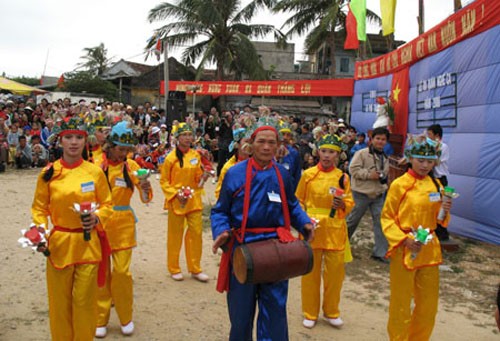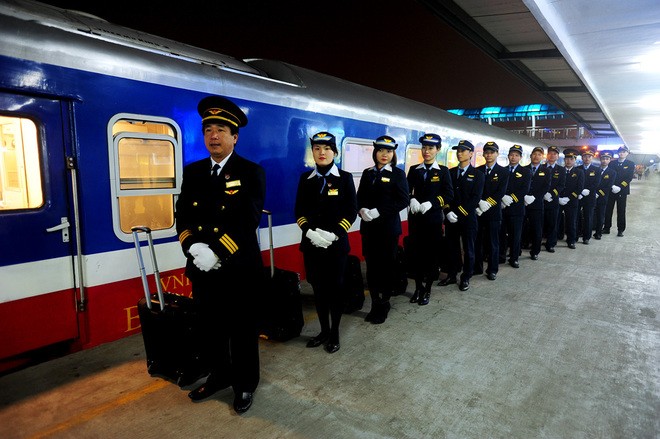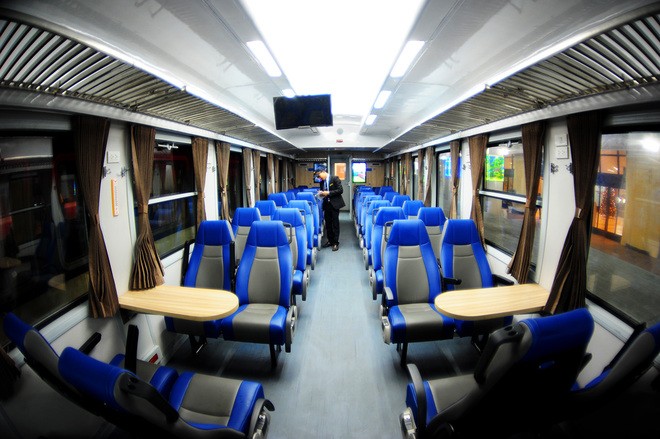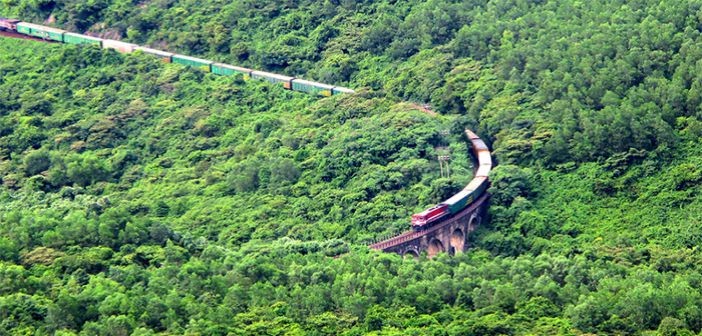(VOVworld) - Summer is coming around and it’s getting hotter in the northern part of Vietnam. The average temperature now ranges from 25 to 30DC. I enjoy this pleasant weather.
B: Yes, we should enjoy this interval period between spring and summer. It’s neither too hot nor too cold. The summer sky is higher and brighter. This weather doesn’t last long. The temperature will rise to over 30 DC soon. From June to August, the highest temperature will be around 40DC.
A: It’s excellent time for summer vacations on the beach or in deep forests. Now, let’s read letters from listeners from around the world. Richard Nowak of the US emailed us: “Happy Easter! I enjoyed tonight’s show on 7315khz listening with a Hallcrafters SX-100 hooked up to an indoor active loop. SINPO was all 5s. Perfect reception!”
B: We are glad to know that the reception was perfect in your place Fort Pierce, Florida. After all studio production, our programs have reached our listeners loud and clear. Mr. Richard wrote: “The Vietnamese news was comprehensive and very interesting, great coverage. The great Sunday Show had a wonderful segment on folkore signing, the singing in rural areas and exorcising evil spirits.”
 |
Sac Bua singing in Phu Le commune, Ben Tre province
|
A: It was a show about Sac Bua singing, a folk singing in the Mekong Delta province of Ben Tre, which has been named national intangible cultural heritage. “Sac bua” singing is a traditional performance in Ben Tre to wish for peace and prosperity on the traditional Lunar New Year.
B: It is believed to originate from the south central part of Vietnam. Locals from Quang Ngai and Binh Dinh central province to the south to settle in Phu Le land in Ben Tre province in the middle of the 18th century.
A: “Sac bua” singing is also an agricultural ritual and spiritual activity, praying for bumper crops, peace and prosperity, and driving away ghosts and devils. “Sac bua” singers perform in groups on the background music of two-chord fiddle, a drum and a coin clapper.
 |
Sac Bua singing festival prays for bumper crops, peace, and prosperity
|
B: From Japan, Koichi Ikeda emailed us after listening to a program on April 16 on 7315 khz saying that the listening condition was excellent. He shared his view after listening to the show about Sac Bua folk singing: “The presence of traditional performance is also getting small in Japan. I think that we have to keep these traditions as much as possible, otherwise Asia will become Europe.”
A: I agree that culture should be preserved but it should evolve and progress, not simply be associated with the past. Vietnam has a total of 8,000 festivals, including 7,000 folk festivals and the others are historical, revolutionary, religious and foreign festivals. Localities revitalize traditional festivals to preserve traditional values while attracting tourists during Vietnam’s international integration.
 |
| The SE3 train on the North-South route |
B: I’m reading a letter from Kallol Nath of Kolkata, India. He listened to our news on 7275 khz at 19:06 UTC with loud and clear reception. Another Indian listener P.S Sekar told us that he got our QSL card showing the photo of Long Bien bridge which was a railway on it. As transportation is the backbone on a country for business and trade. Sekar wants to know about the railway tracks in Vietnam. What is the busiest and largest railway station in Vietnam?
A: The Vietnamese railway network has a total length of 2,600 kilometers including over 1,700 kilometer-single track north-south railway running between Hanoi and Ho Chi Minh City. There are more than 270 stations on the network which is operated by the state-owned enterprise Vietnam Railway. This was built in the 1880s during French colonial rule. A Hanoi-Ho Chi Minh railway ticket costs around 60 USD depending on whether your car has soft or hard beds, with or without air-conditioning and meals.
 |
| SE3 train travels 31 hours from Hanoi to Ho Chi Minh city |
B: There is a standard gauge line running from Hanoi to China, eventually leading to Beijing, and some mixed gauge in and around Hanoi. The entire Hanoi-Beijing run is about 3,000 km and takes approximately 48 hours, including a three-hour delay at the border checkpoint. The Vietnam-China cross border railway section is the Hai Phong – Yunnan route, which is about 860 km long and runs through Huu Nghi Quan Friendship Pass.
A: China, Vietnam, Lao, Thailand, Cambodia and Myanmar approved a joint program to build a railway connecting the 300 million people who live in the Mekong Delta. The whole system will connect to Singapore. The project is expected to be completed in 2020.
B: In 2008, the Ho Chi Minh City authority approved the construction of a subway system comprising four lines. The city’s transport development master plan to 2020 envisages developing three monorails or light rail lines and six underground metro routes with a total length of 110 kilometers. Ben Thanh in District 1, already a major hub for bus traffic, will become a major hub connecting several lines.
 |
| A railway session on the Hai Van pass |
A: Vietnam's transport system has 222,000 km of road, 17,000 km of waterways, 37 civil airports, including three international gateways: Noi Bai, Da Nang, and Tan Son Nhat. Tan Son Nhat international airport in Ho Chi Minh city is the largest, handling 75 percent of international passenger traffic.
B: That’s a short take on Vietnamese railways and other transportation. Now I’m reading a reception report from S.B Sharma of India. The program on April 19 on 7280khz had good reception.
A: Hajime Mikihara of Japan listened to our program on 9840kHz on April 23. He wrote: “Your signal was strong, and there was no interference. SINPO at 45433. Therefore, I could receive your broadcasting with good condition.”
B: Ullmar Qvick of Sweden thanked VOV for sending him a 2017 Year of the Rooster wall calendar. Ullmar commented on a program on April 23: “Reception conditions have not been too good during the winter. Now reception is improving and I like to listen on the radio in addition to the web. SINPO rating for the program on April 23 was 45433.”
A: He continued to write “I hope to write to you more often in the future. Your friendly attitude towards listeners is really appreciated! Kind regards to you all, keep up the good work as one of the nicest radio stations on short waves!”
B: Last but not least is a surprise from Andrew Sirianni of Canada. He wrote: “I wish to thank you for the beautiful 2017 Year of the Rooster calendar which arrived in the mail yesterday. The delay was entirely the fault of the Canadian postal system since the package you sent was correctly addressed and was postmarked December 10, 2016. It was a pleasant surprise to finally receive the calendar and there is still most of 2017 in which to use it. This is the third calendar in a row I have received from your station and I hope you continue to send them. It hangs on the wall proudly at my listening station and I shall continue to listen to VOV on shortwave and will send you reports in the future.
A: Thank you all dear listeners for listening to VOV and supporting shortwave. We’ll verify your reception reports soon. Please send reports to English Section, Overseas Service, Voice of Vietnam, 45 Ba Trieu Street, Hanoi, Vietnam. Our email address is englishsection@vov.org.vn. Thank you for listening. Join us again next Wednesday for another Letter Box show. Goodbye from both of us to all of you.